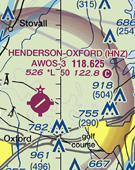Complacency
The toughest flight test by any standards is the Private Pilot Flight Test. This starts from square one. The applicant is not assumed to have demonstrated any aviation knowledge or skill beforehand. Through oral and in-flight testing, he or she must demonstrate all aspects of aviation from aerodynamics through in-flight performance of maneuvers to prove the ability to apply this knowledge.
Flight tests for additional ratings and certificates begin with the assumption that the applicant has already demonstrated the knowledge acquired in the Private Flight Test, and need not demonstrate it again unless it is to a higher level of competency.
As an examiner, I am limited by the Practical Test Standards. However, I can often ascertain that the applicant has failed to maintain proficiency in knowledge and flying techniques.
Why would someone who spent so much time and effort in preparing for his or her private certificate never again use the computer to estimate ground speeds and headings before a flight? Why would they forget such important references as the AIM or Airport Facility Directory? Why would they forget basic VFR flight rules, such as airspace and weather minimums, because they always file IFR?
The common thread is complacency and the failure to understand the obligation they have to aviation and less advanced pilots.
Something is wrong when a student pilot cannot ask a basic question of an ATP neighbor or acquaintance and get a reasonably accurate answer.
In ATP flight tests, the oral exam is limited to an equipment oral. This means the applicant can only be tested on the airplane he or she is going to use on the flight test. Questions on regulations, basic aerodynamics, procedures for airport operations, pilotage, dead reckoning, etc., are not covered.
Military pilots can obtain a commercial pilot certificate and instrument rating by taking a short written exam, and then presenting this to an FAA inspector, along with their military records. No flight or oral test is required. They can then take the ATP written and flight test and receive their ATP certificate. Nowhere do they have to demonstrate competency and knowledge in the areas that a student pilot has to demonstrate to receive a private certificate. By the same token, many pilots who have been flying as first officers for airlines, both commuters and majors, come for an ATP flight test and do not have to demonstrate that they still are knowledgeable in many of the basics a private pilot is expected to know.
Now, why I am I concerned about this? The answer is safety. It is up to professional pilots to be able to provide advice and counsel to newly minted private pilots, and low time commercial pilots and flight instructors.
What would you think of a college math professor teaching advanced theory to a Ph.D. class who could not help the neighbor’s 15-year-old son do a simple algebra problem? That’s how I feel about a professional or high time pilot who cannot help his neighbor understand airspace and VFR weather minimums.
Most professional pilots have to undergo considerable annual recurrent training. These programs do an outstanding job of reviewing aircraft systems and emergency procedures. But I think they should spend just as much time reviewing ATC procedures, meteorology, basic navigation and VFR regulations. I often hear “Why should I know about the classes of airspace and VFR weather since I file IFR all the time?” My reply is always the same: “I fly VFR most of the time, and I want you to know when I can and cannot be up there.”
Also, you may be flying under IFR, but when you are in VFR conditions you have the same responsibility as the VFR pilot to see and be seen. How can you know when to look out the window if you are not knowledgeable about the VFR weather minimums for the airspace you are in?
Just this past week, I spoke to a pilot who, while flying a sophisticated, pressurized, single engine airplane from Florida to a non-tower airport near Raleigh at night, had a total electrical failure. He calmly pulled out a sectional chart and flashlight, and completed the trip VFR using pilotage and dead reckoning. To him it was fun and satisfying that he could do it. I was proud to talk to a highly experienced pilot who could still do it. All too many high time pilots would no longer have the skills to continue the flight.
How about you? Do you remember the things you had to be proficient in, such as pilotage, dead reckoning, short and soft field landings, and preparing a good flight log? If you no longer feel confident in your ability do what you had to do as a student, you have become complacent.
Go back and dig out your old computer and see if you can figure a magnetic heading and estimated ground speed. This could be the beginning of becoming the pilot you should be rather than the pilot you are.


